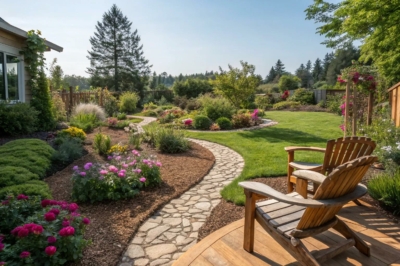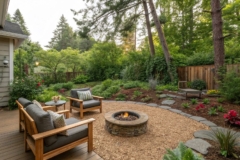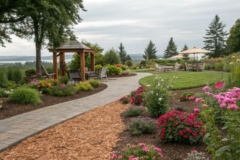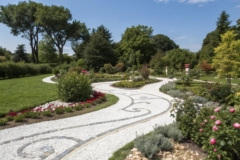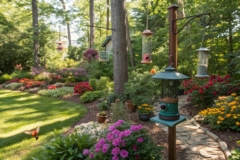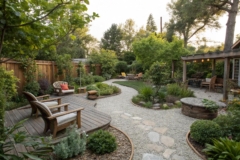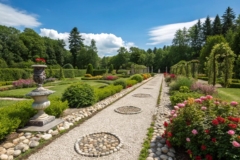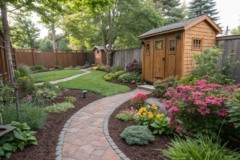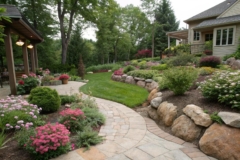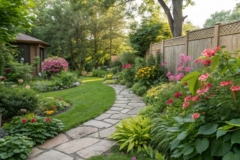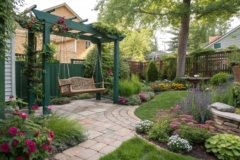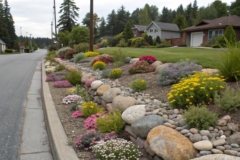1. Create Charming Garden Paths
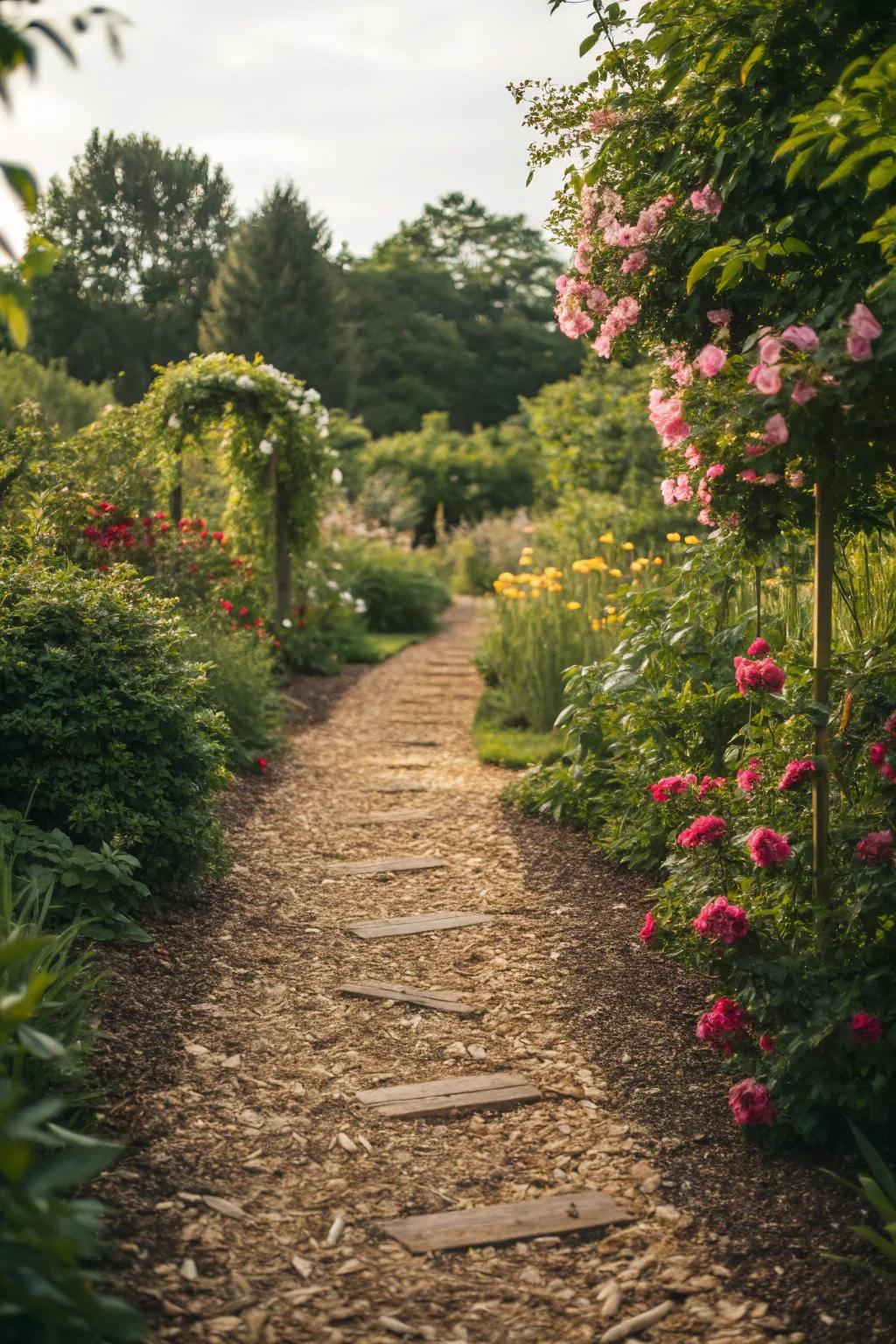
Wood chips make the perfect material for creating natural garden paths. I’ve used them to connect different sections of my garden, and the rustic look is just delightful!
Some handy options:
- Garden Pathway Stones: Enhance your garden paths with elegant stones for a beautiful and durable walking surface.
- Natural Wood Chips for Landscaping: Transform your garden paths with natural wood chips for a rustic and eco-friendly appearance.
- Decorative Garden Arbors: Add charm to your paths with decorative arbors, creating a welcoming entrance to your garden.
2. Highlight Accent Areas
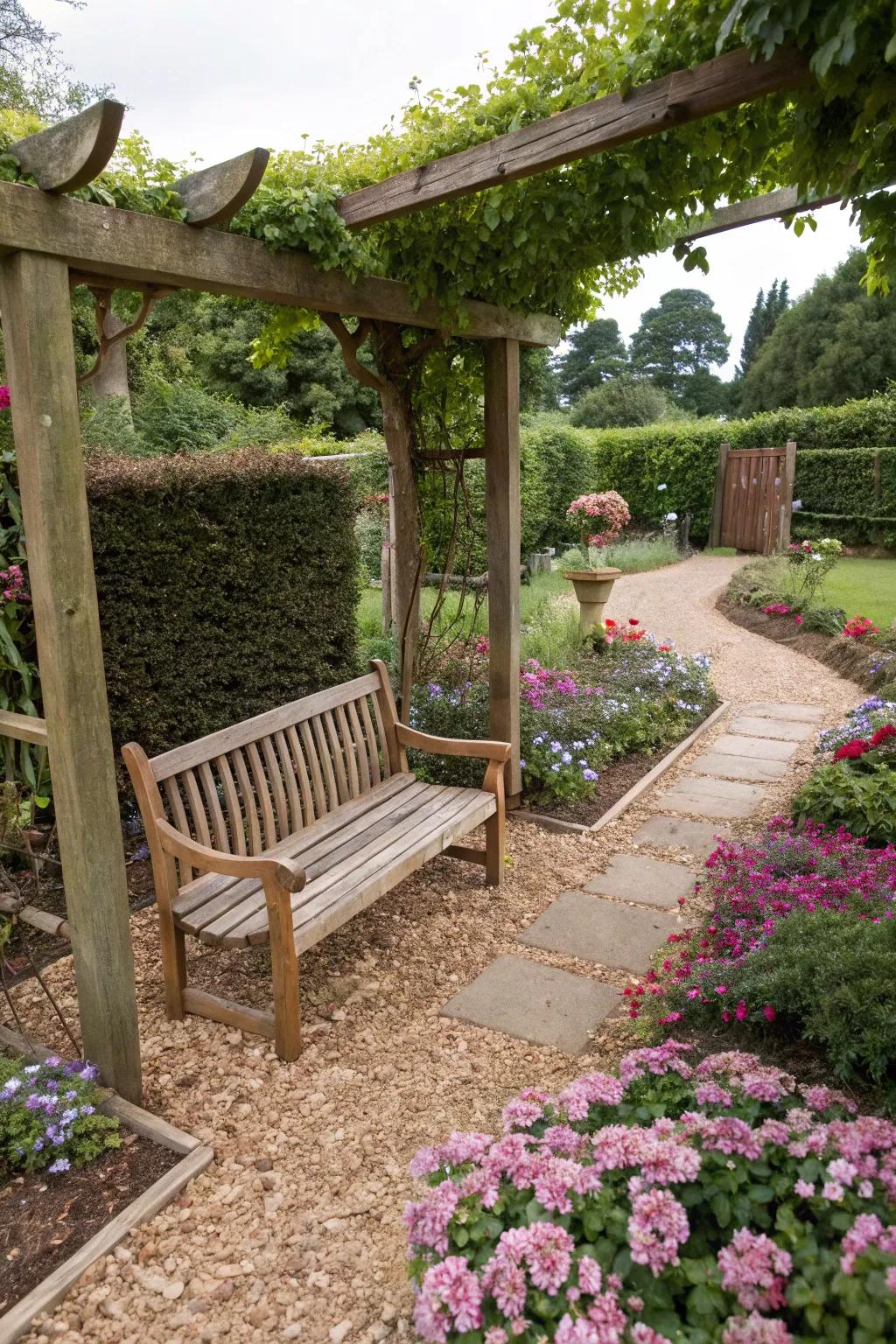
Use wood chips to draw attention to special garden features or seating areas. It’s a subtle yet effective way to highlight your favorite spots.
May just do the trick:
- Outdoor Wooden Garden Bench: Add a charming seating area to your garden with a beautifully crafted wooden bench.
- Decorative Garden Pergola: Enhance your garden’s elegance with a stylish pergola, creating a stunning focal point.
- Wood Chip Landscaping Mulch: Define and beautify your garden paths with natural, eco-friendly wood chip mulch.
3. DIY Wood Chip Patio
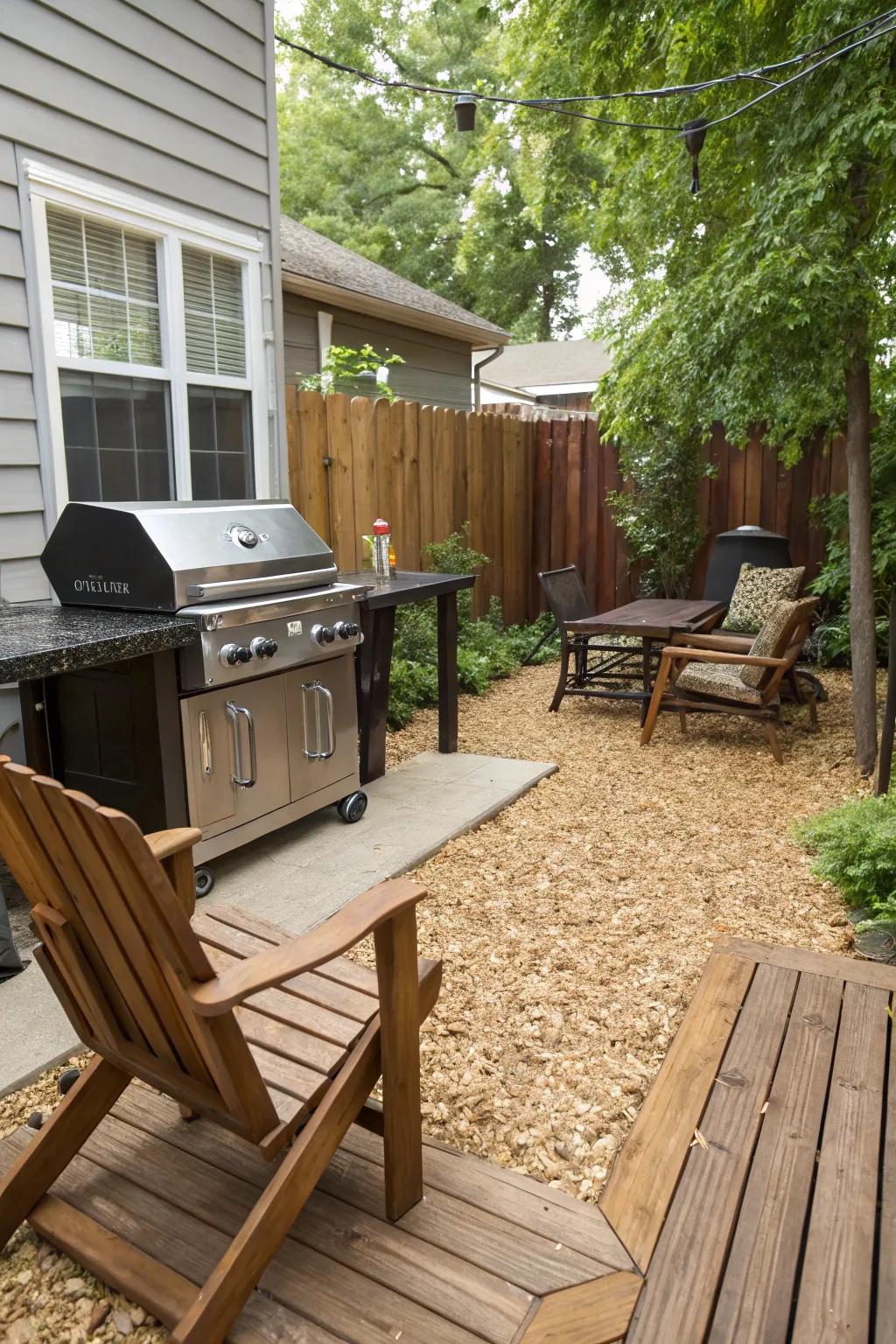
Lay wood chips for a quick, easy patio. It’s a simple solution I used for my backyard BBQ area, and it’s held up beautifully.
Consider these options:
- Outdoor Wood Chip Mulch: Enhance your patio with durable wood chip mulch for a natural and attractive surface.
- Heavy-Duty Tarpaulin: Protect your DIY patio area with a heavy-duty tarpaulin for increased durability and longevity.
- Wood Patio Furniture Set: Add comfort and style with a sturdy wood patio furniture set for your backyard gatherings.
4. Mulch for Your Plants
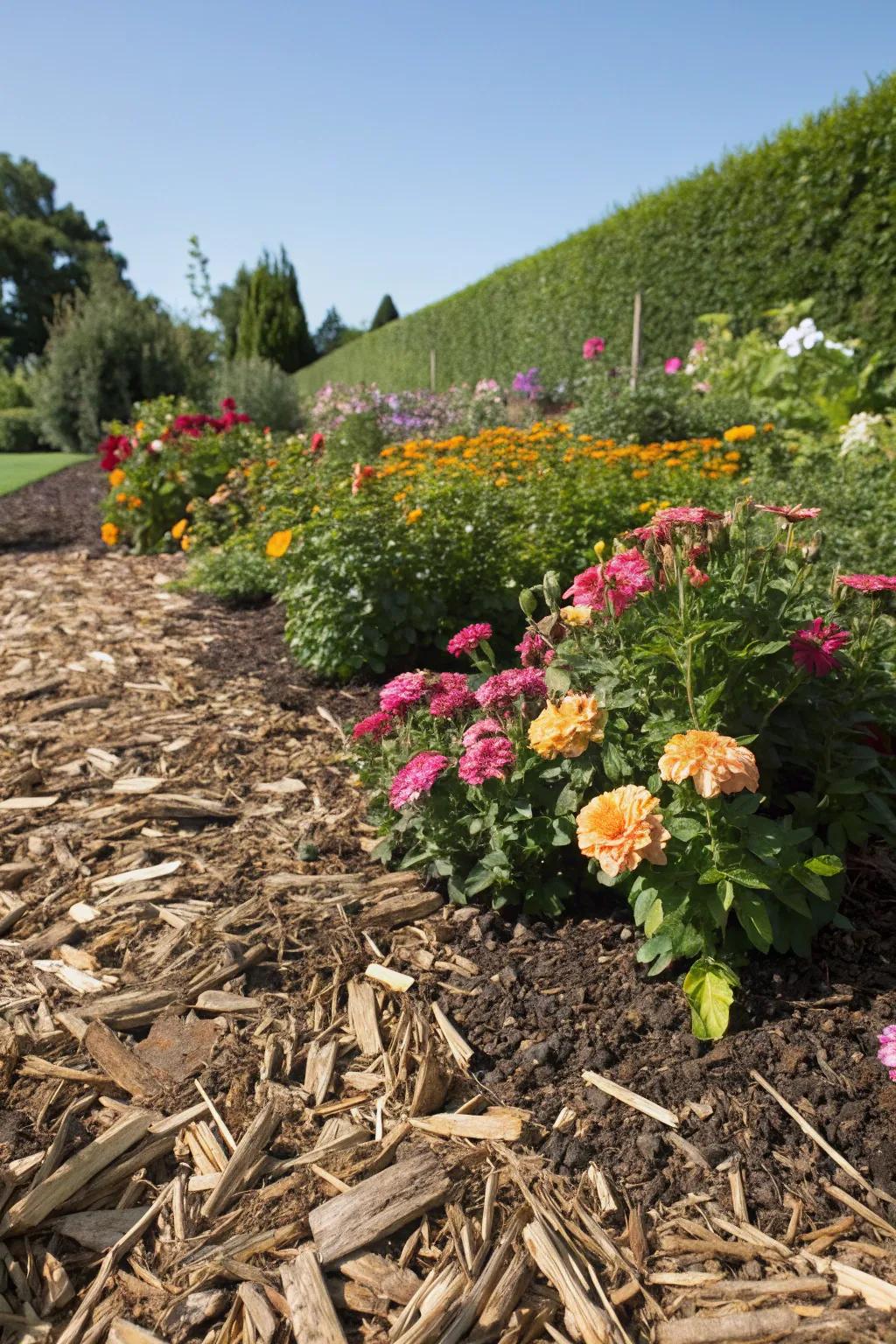
Using wood chips as mulch helps retain soil moisture and suppress weeds. I’ve noticed my plants thriving with this natural blanket!
Check if these fit your needs:
- Natural Cedar Wood Chips Mulch: Enhance soil moisture retention and reduce weeds by applying natural cedar wood chips today.
- Organic Bark Mulch: Choose organic bark mulch to provide a protective layer that benefits your garden’s health.
- All-Purpose Garden Mulch: Use all-purpose garden mulch to create a thriving environment for your plants effortlessly.
5. Add Texture to Flower Beds
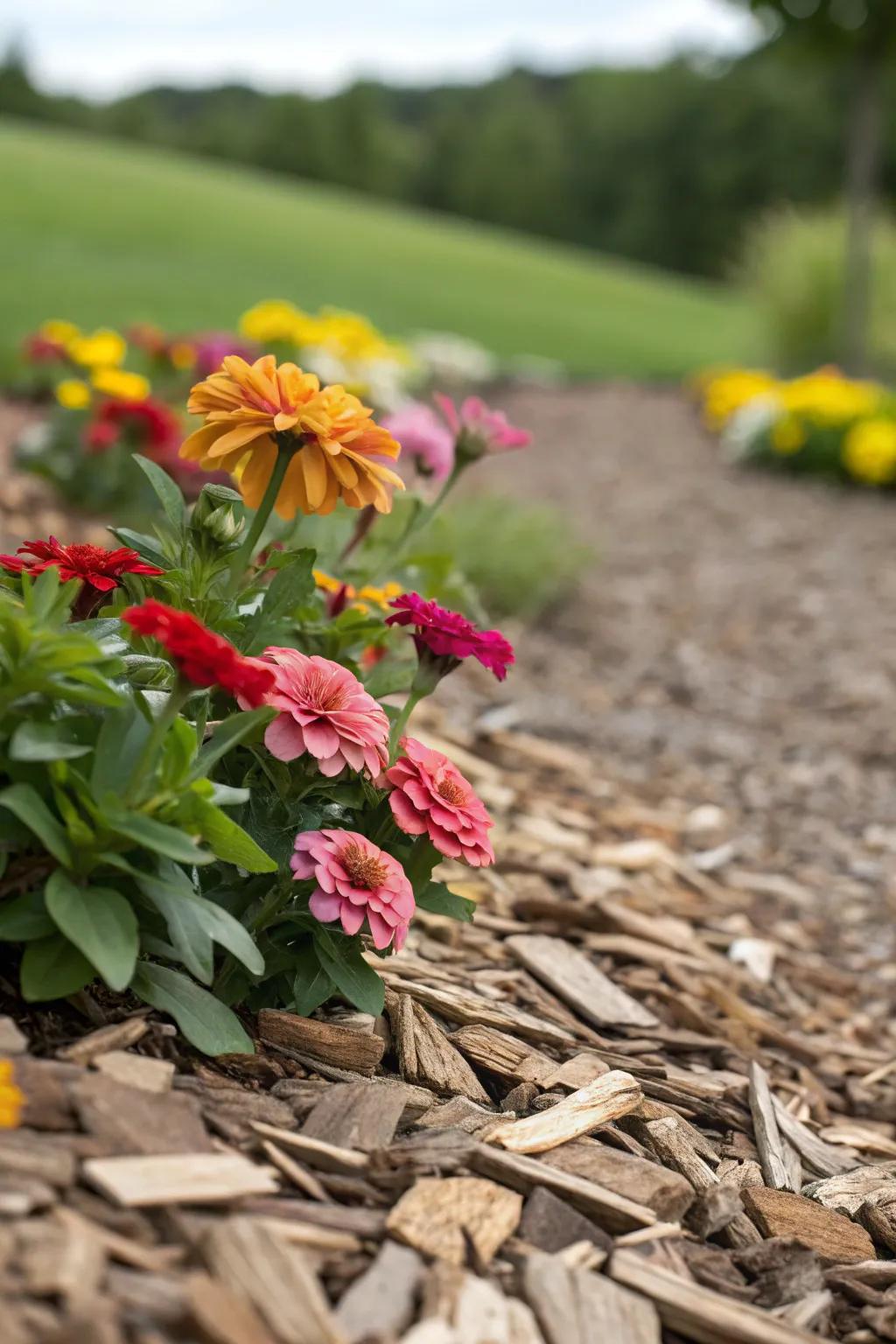
Use wood chips to add texture and contrast in your flower beds. They really make the colors of my plants pop!
These products might be useful:
- Natural Wood Chips Mulch: Enhance your garden’s aesthetics with natural wood chips, adding rich texture and vibrant contrast.
- Flower Bed Edging Tool: Define and organize your flower beds beautifully with an easy-to-use edging tool. Create clean borders.
- Organic Fertilizer for Flowers: Boost plant growth and color vibrancy with this organic fertilizer, perfect for healthy, thriving blooms.
6. Eco-Friendly Driveway
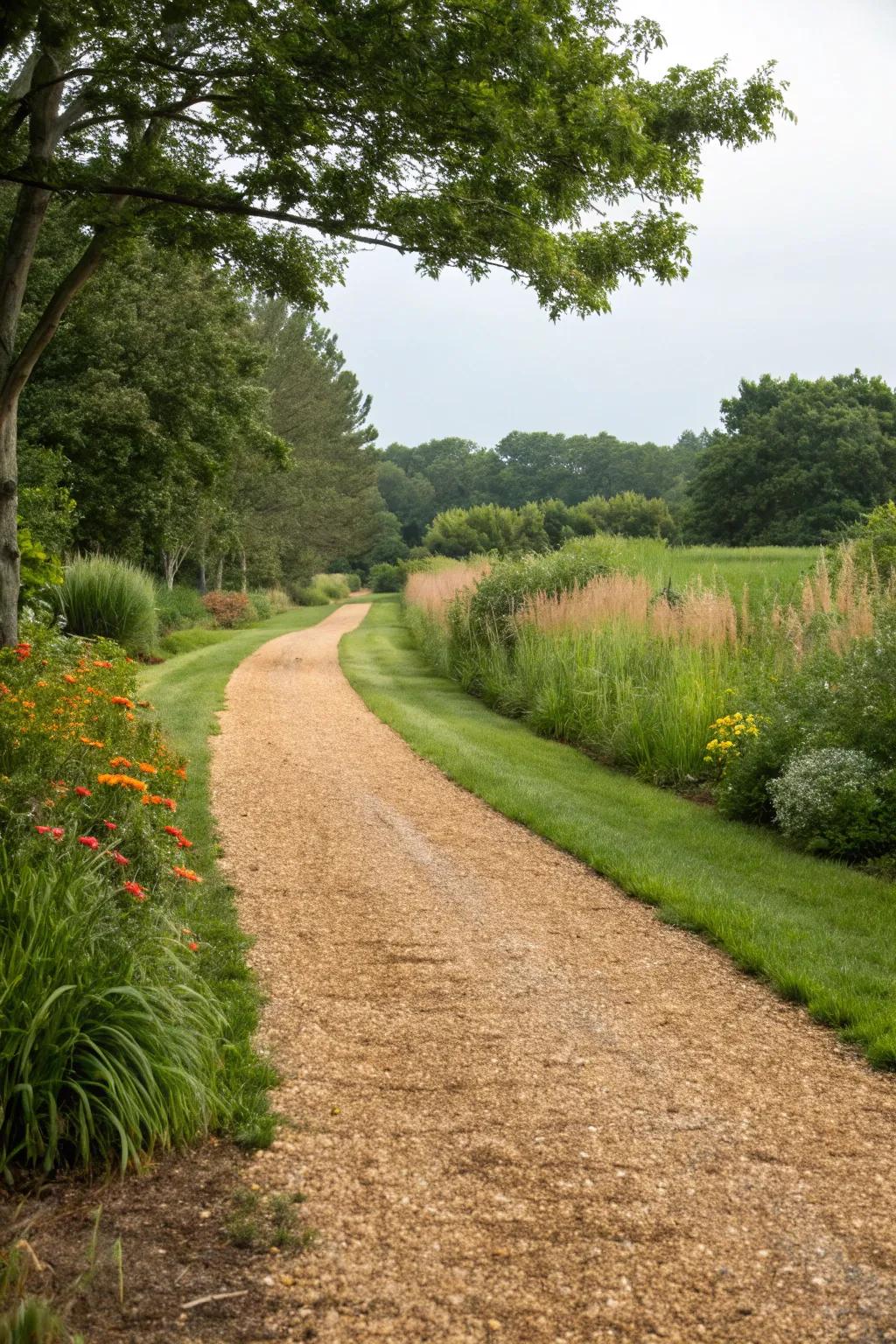
Consider using wood chips for an eco-friendly driveway. It’s a sustainable choice that I’ve seen work wonders in rustic settings.
Check these products out:
- Bulk Wood Chips: Enhance your driveway’s sustainability with these durable wood chips perfect for rustic aesthetics.
- Weed Barrier Landscape Fabric: Prevent pesky weeds with this eco-friendly barrier, ideal for maintaining your wood chip driveway.
- Garden Edging Border: Define your driveway elegantly with this durable and flexible garden edging for neat borders.
7. Design a Secret Woodland
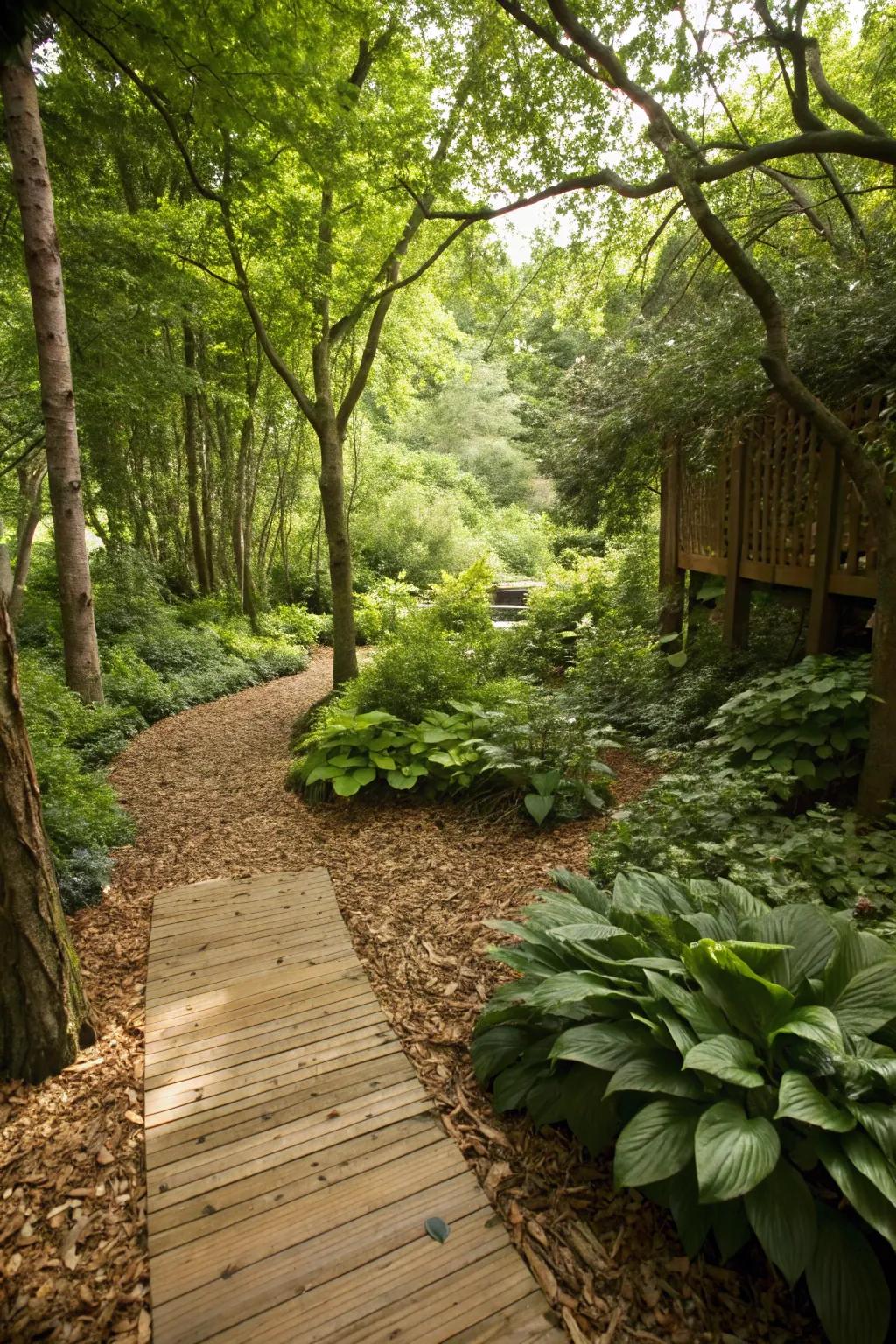
Transform a shady spot into a magical woodland area using wood chips. It’s like having a secret garden corner right at home.
A few helpful options:
- Wood Chip Mulch: Create a natural path and retain soil moisture with eco-friendly wood chip mulch.
- Garden Path Lighting: Illuminate your woodland paths with solar-powered lights for magical evening strolls.
- Shade-Loving Plants: Enhance your woodland garden with lush, shade-tolerant plants for a green retreat.
8. Create a Cozy Patio Area
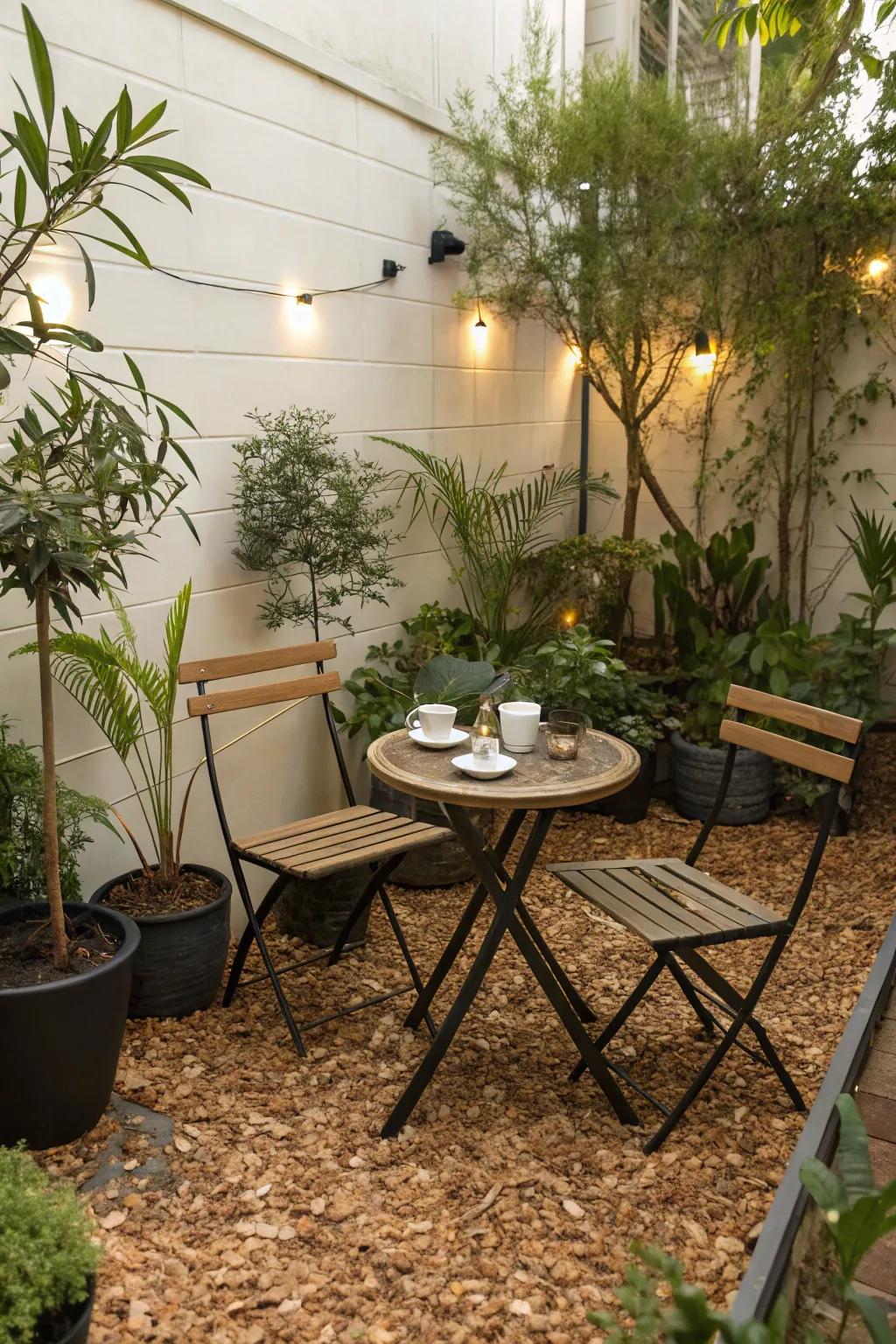
For a budget-friendly patio, consider using wood chips. I love how it gives my outdoor seating area a warm, inviting feel.
Give these a look:
- Outdoor Patio Bistro Set: Upgrade your seating with this stylish bistro set, perfect for cozy outdoor gatherings.
- String Lights for Patio: Illuminate your patio with charming string lights, creating a warm, inviting atmosphere.
- Wood Chips for Landscaping: Enhance your patio’s natural look with decorative wood chips, adding texture and warmth.
9. Emphasize Tropical Plants
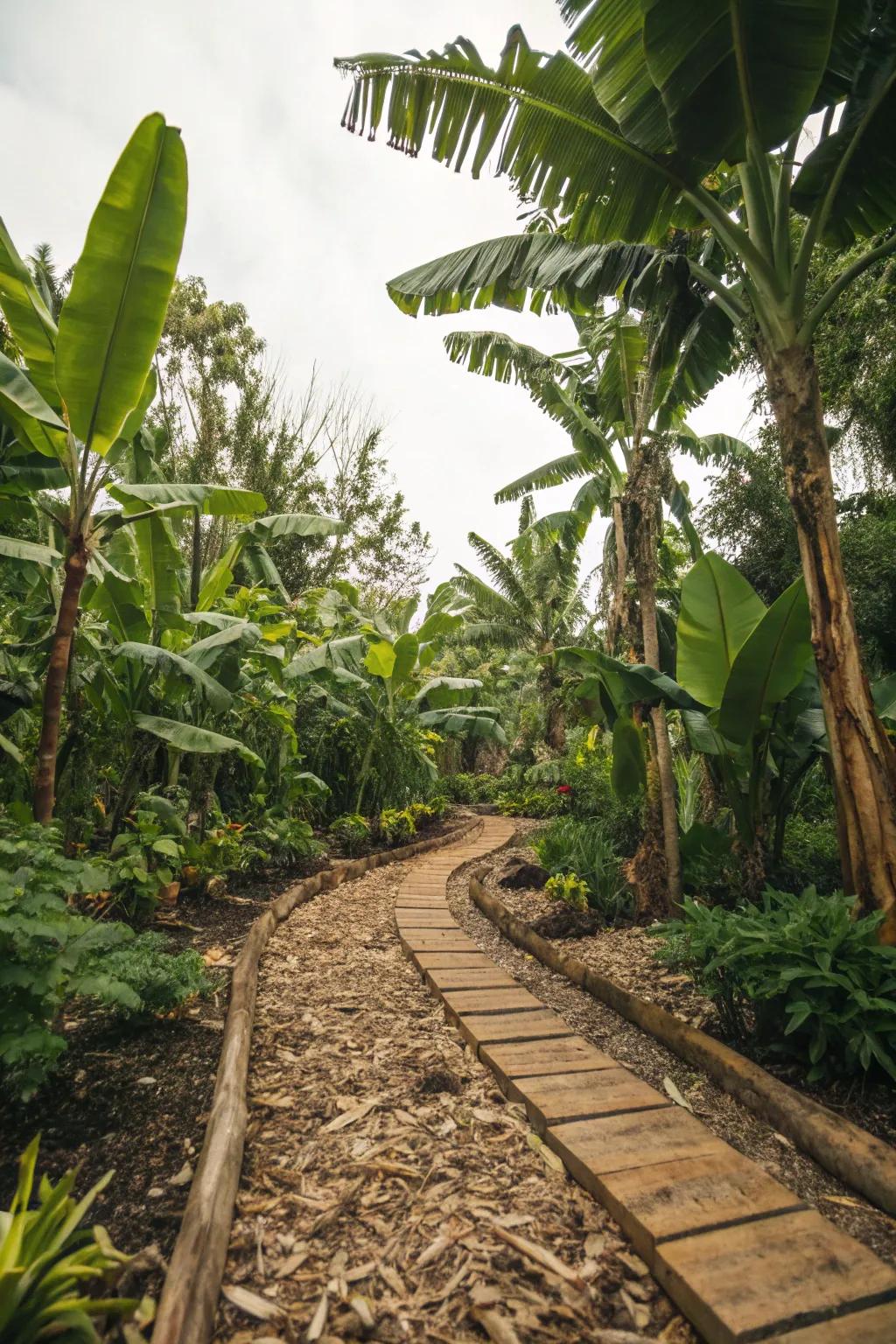
Wood chips are great at setting off tropical plants, giving them a lush, exotic backdrop. My banana plants have never looked better against them!
A few choices to try:
- Wood Chip Mulch: Enhance your tropical plants with natural wood mulch for a lush, exotic landscape backdrop.
- Outdoor Garden Path Lights: Illuminate your tropical garden path with elegant lights, enhancing evening ambiance and visibility.
- Tropical Plant Fertilizer: Boost your banana plants’ growth with nutrient-rich fertilizer specifically for tropical species.
10. Enhance Your Vegetable Garden
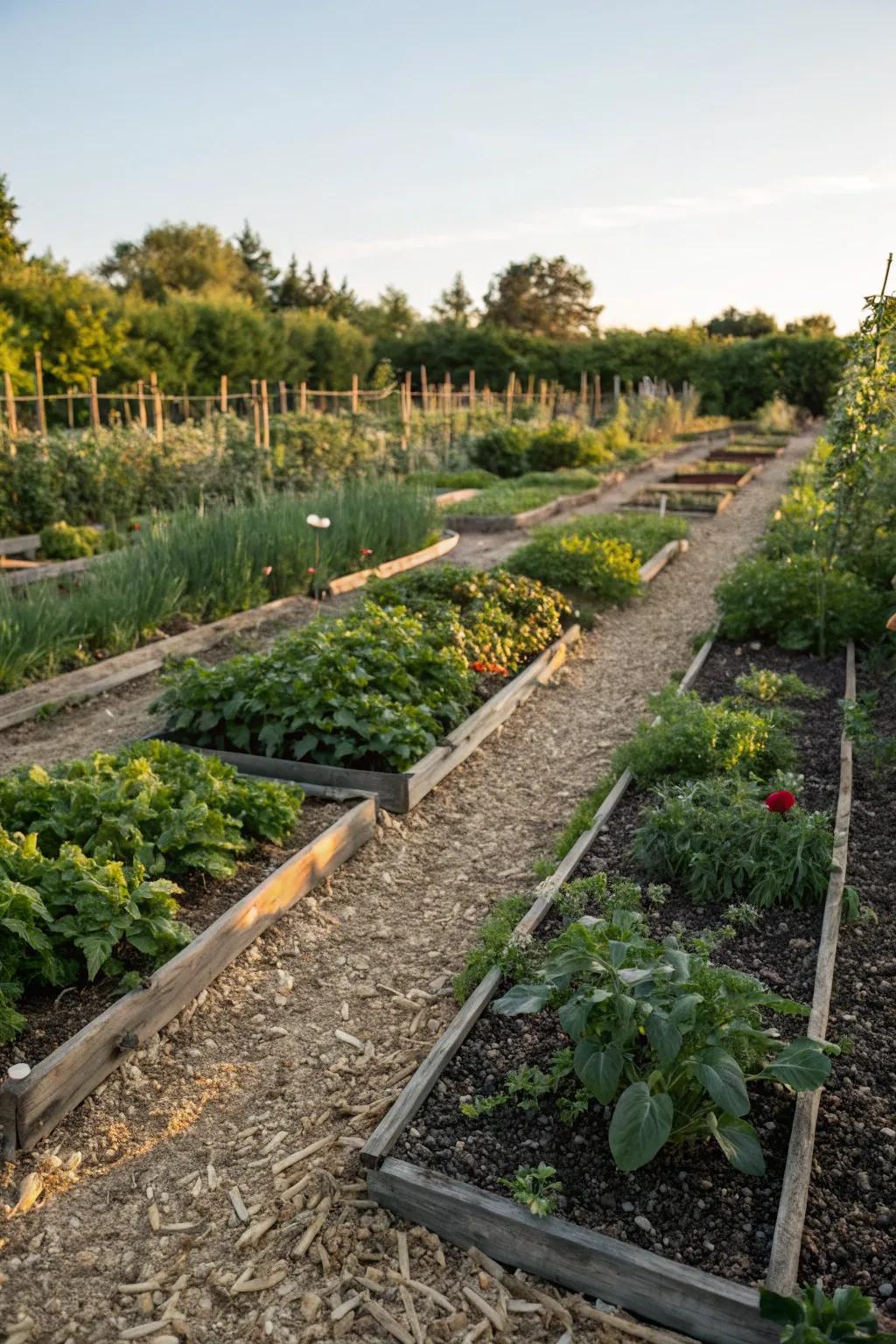
Incorporating wood chips into your vegetable garden helps enrich the soil over time. I’ve found my veggies grow bigger and better with this trick.
A few relevant products:
- Organic Wood Chips Mulch: Boost soil health naturally with organic wood chips; ideal for thriving vegetable gardens.
- Heavy Duty Gardening Gloves: Protect your hands during gardening; perfect for spreading wood chips and planting.
- Raised Garden Bed Kit: Set up a neat vegetable garden effortlessly with this easy-to-assemble raised bed kit.
11. Grow Your Own Mushrooms
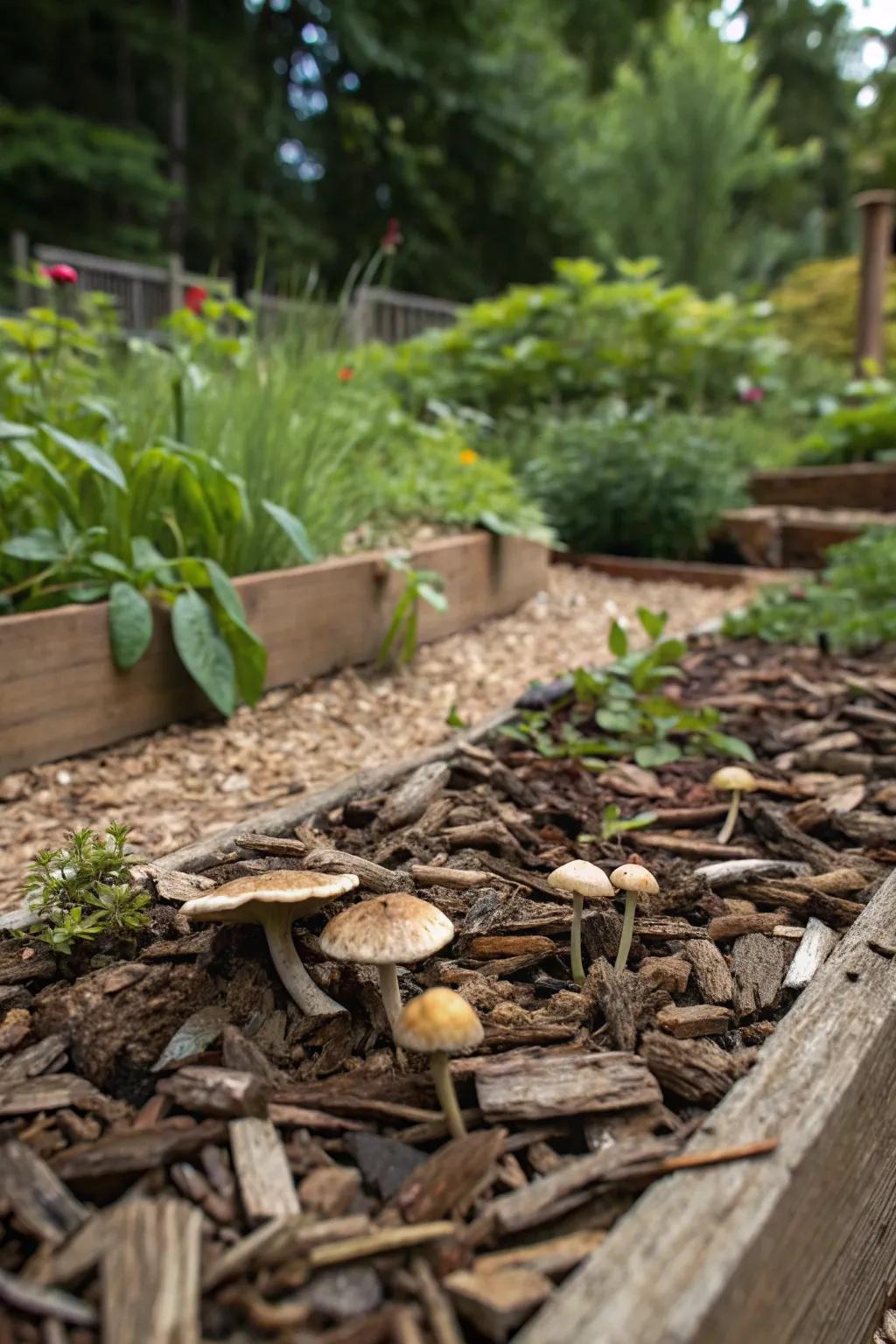
Did you know wood chips can be used to grow mushrooms? I tried it, and it’s such a rewarding little project to watch them sprout.
Possibly helpful picks:
- Mushroom Growing Kit: Easily start your mushroom garden with this kit—perfect for beginners and enthusiasts alike.
- Organic Wood Chips: Enhance mushroom cultivation with organic wood chips—ideal for a sustainable and eco-friendly setup.
- Mushroom Spawn: Kickstart your mushroom project with quality spawn, specially selected for home gardeners.
12. Define Your Garden Borders
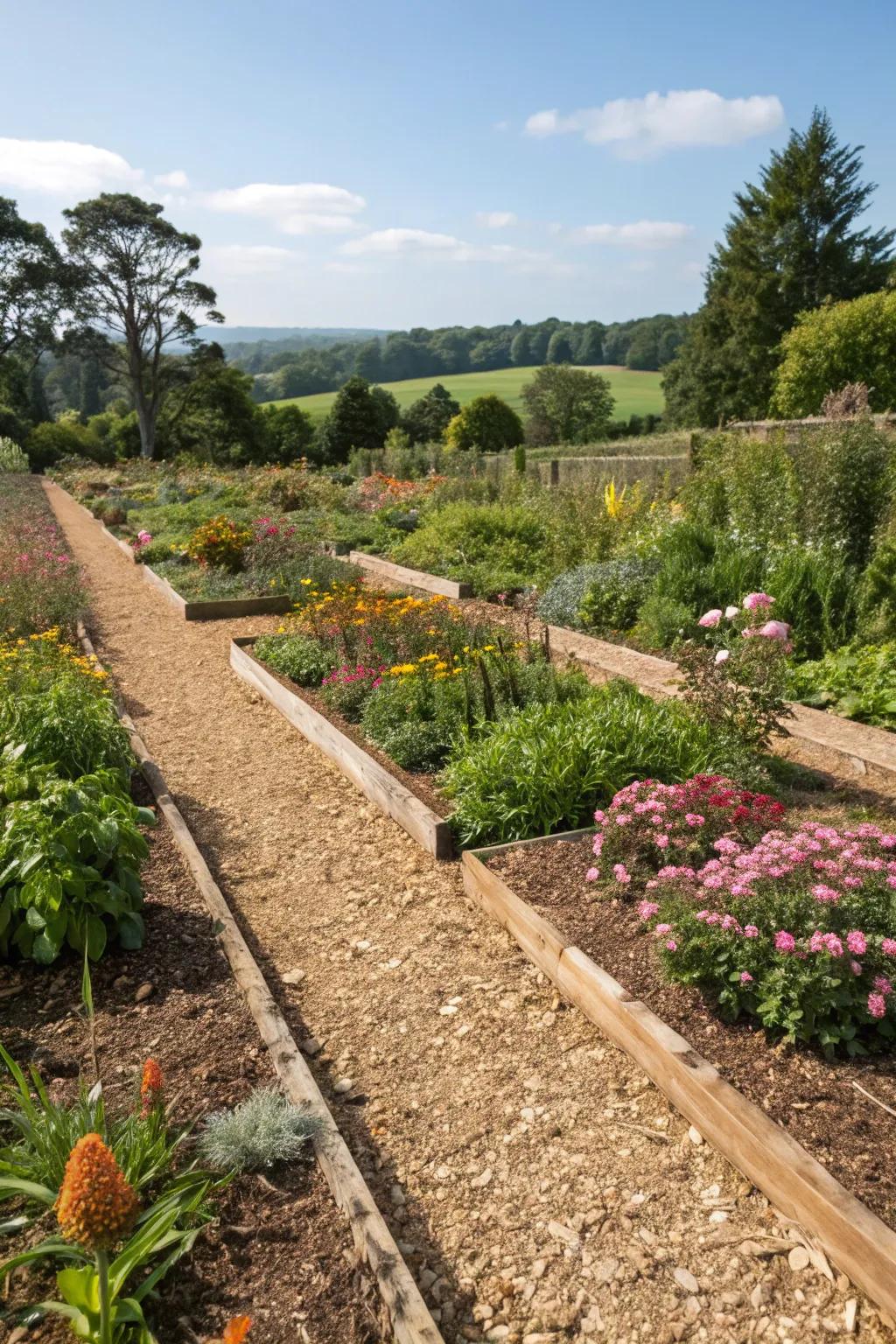
Add a neat, defined edge to your flower beds using wood chips. It’s an easy way to create decorative borders and keep everything looking tidy.
A few suggestions:
- Garden Border Wood Edging: Enhance your garden beds with durable wood edging. Achieve neat and defined landscaping effortlessly.
- Landscaping Fabric: Prevent weeds and maintain your flower bed aesthetics with this easy-to-use landscaping fabric.
- Wood Chip Mulch: Keep your garden hydrated and weed-free with natural wood chip mulch. Elevate your garden’s look.
13. Low-Maintenance Veggie Paths
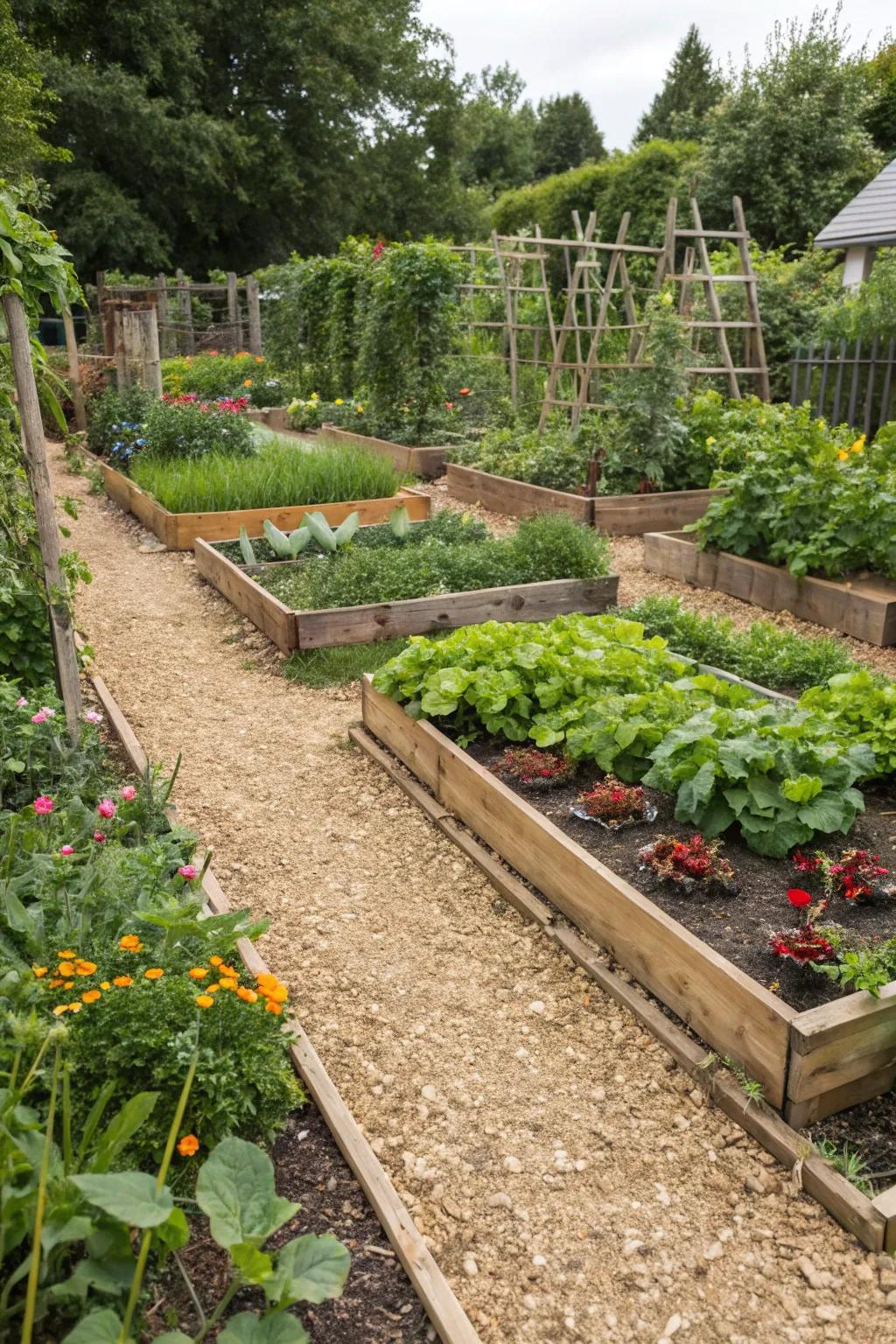
Use wood chips in your veggie garden paths for a low-maintenance option. They’re easy to walk on and keep weeds away.
Possibly handy products:
- Natural Wood Chips for Landscaping: Enhance your garden paths with these natural wood chips, perfect for suppressing weeds and elegance.
- Landscape Fabric for Weed Control: Lay a strong foundation with landscape fabric to effectively prevent weeds in your garden paths.
- Garden Edging Border: Define your pathways neatly with durable garden edging, ensuring clean lines and less maintenance.
14. Natural Seating Area
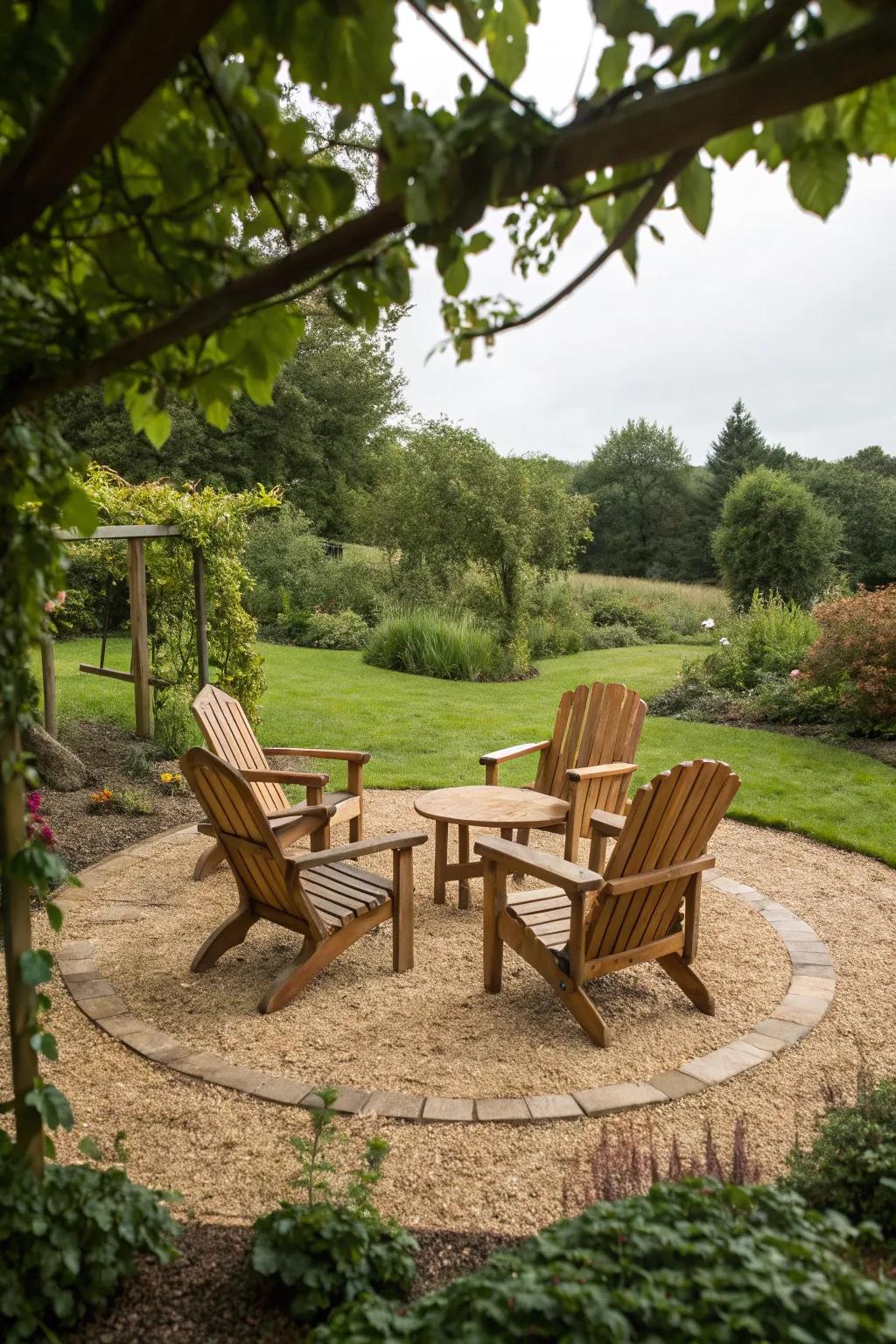
Create a peaceful seating nook with a circle of wood chips. Add a couple of Adirondack chairs, and you’ve got a perfect relaxation spot.
Explore these options:
- Adirondack Chairs: Enhance comfort and style in your garden with these weather-resistant Adirondack chairs.
- Outdoor Side Table: Complete your seating nook with a sturdy table for drinks and snacks.
- Solar Garden Lights: Add ambiance and illumination to your relaxation spot with energy-efficient solar lights.
15. Rustic Landscaping Touch
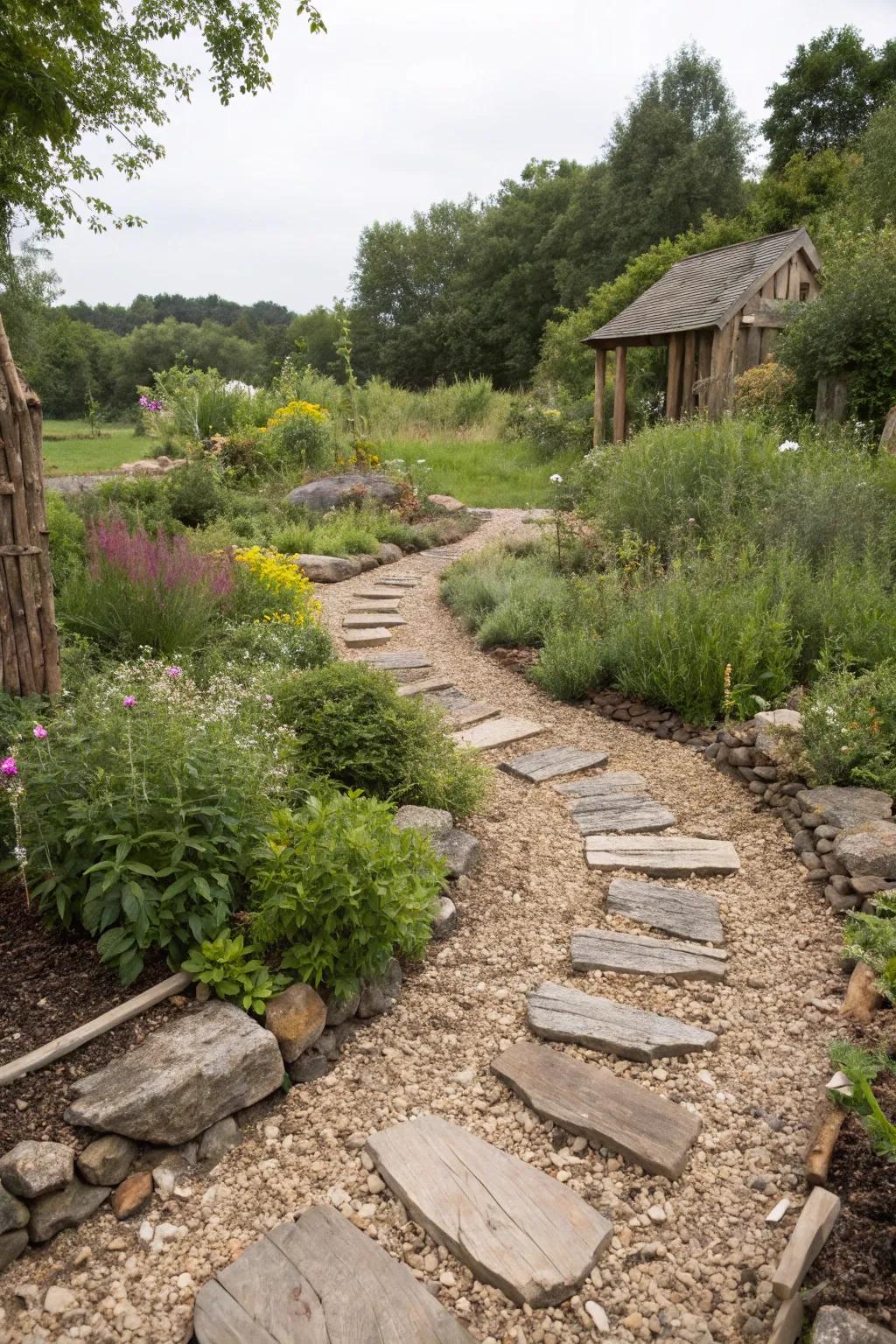
Wood chips are perfect for achieving a rustic aesthetic in your garden. They blend seamlessly with natural landscapes, creating an earthy vibe.
Items that may come in handy:
- Wood Chip Mulch: Enhance your garden’s rustic charm with wood chip mulch, providing natural beauty and weed control.
- Decorative Garden Stones: Create a picturesque path with decorative stones that complement your natural wood chip landscaping.
- Rustic Garden Arbor: Add a stunning focal point with a rustic garden arbor, perfect for vines and climbing plants.
16. Wood Chip Stumpery
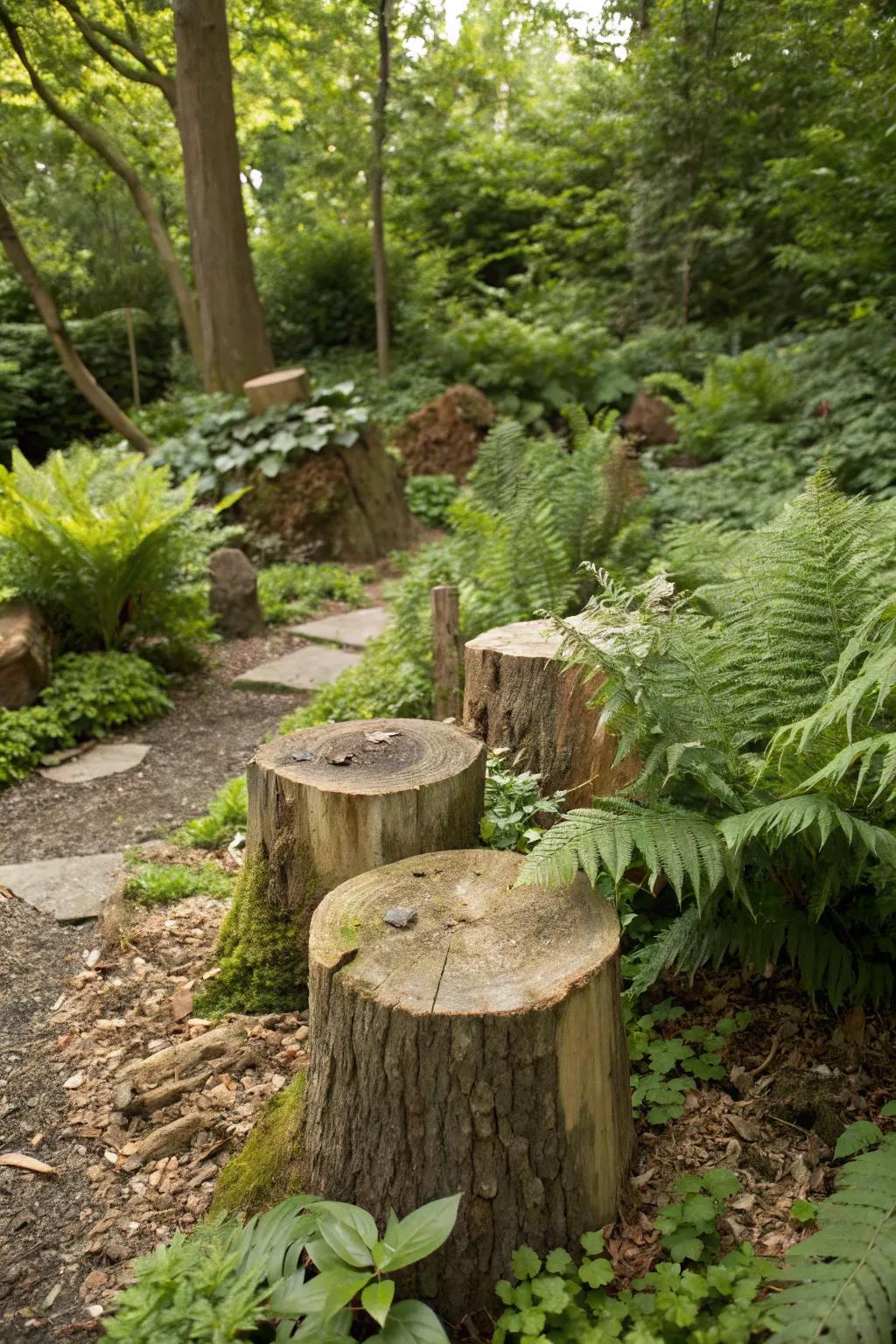
Combine wood chips with logs to create a whimsical stumpery. It’s a haven for wildlife and a delight to explore.
Try these:
- Wood Chipper/Shredder: Transform garden waste into useful wood chips effortlessly. Enhance your stumpery’s natural appeal today.
- Decorative Garden Stumps: Add rustic charm with decorative stumps that blend seamlessly into your stumpery landscape.
- Ferns and Shade Plants: Create lush greenery around your stumpery with shade-tolerant ferns and plants.
17. Surprise Rock Garden

Incorporate wood chips into a rock garden for an unexpected twist. The combination adds a natural, earthy element to the design.
Might be a good match:
- Decorative Landscaping Wood Chips: Enhance your rock garden’s earthy ambiance with these versatile and natural wood chips.
- Rock Garden Succulent Mix: Add texture and color with this vibrant mix of hardy succulent plants for your garden.
- Garden Landscape Fabric: Keep weeds at bay with durable landscape fabric, perfect for under wood chips and stones.
18. Decorate Patio Containers
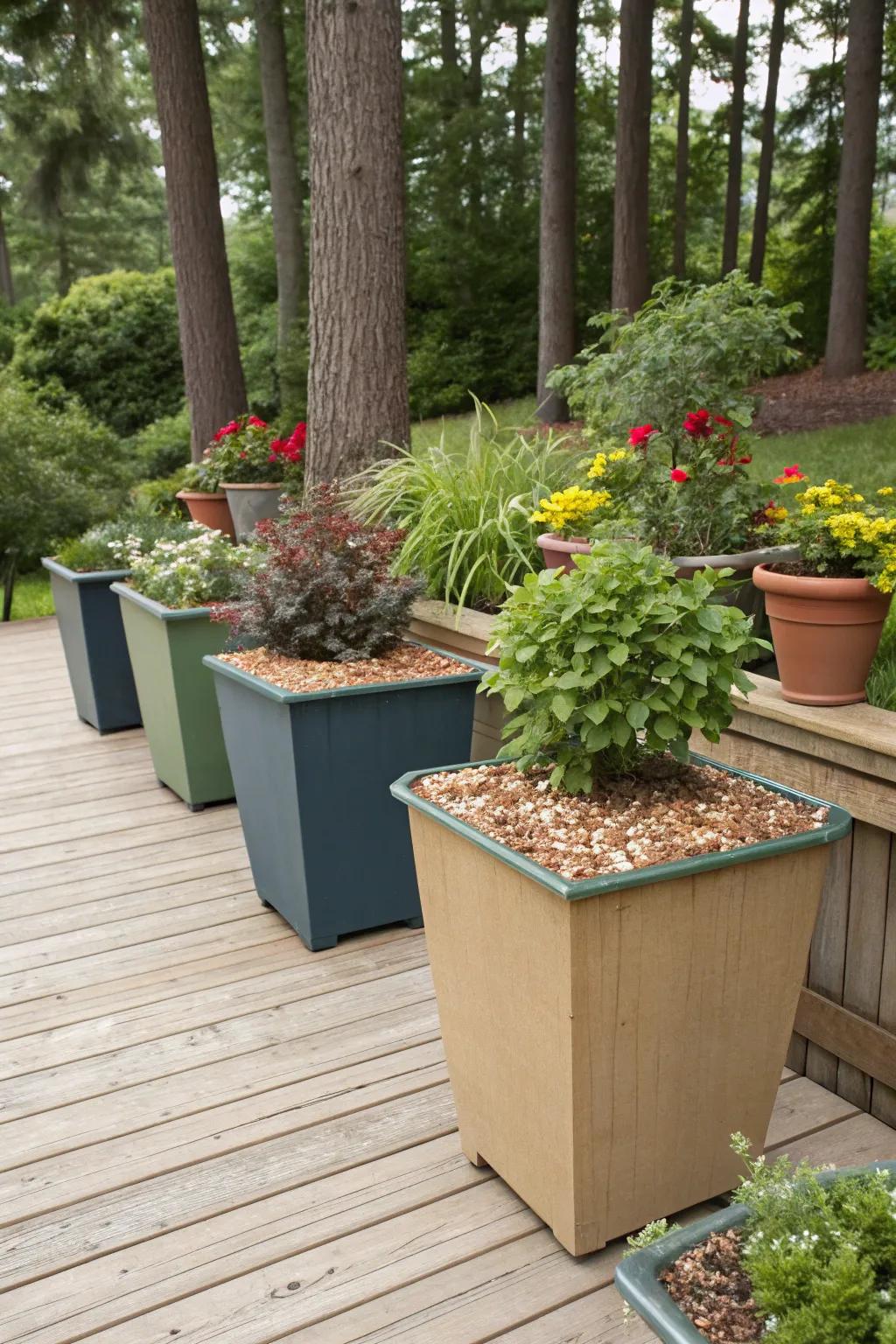
Top your patio pots with wood chips for a neat, decorative touch. Plus, it helps retain moisture in the soil – a win-win!
You might like:
- Natural Cedar Wood Chips: Enhance your patio pots with natural cedar chips, offering moisture retention and a polished look.
- Decorative Garden Pebbles: Add style to your planters with decorative pebbles, ensuring both aesthetics and soil coverage.
- Potting Soil Moisture Preserver: Preserve moisture in your patio pots effectively, ensuring healthier plant growth and minimal water use.
19. Highlight With River Rocks
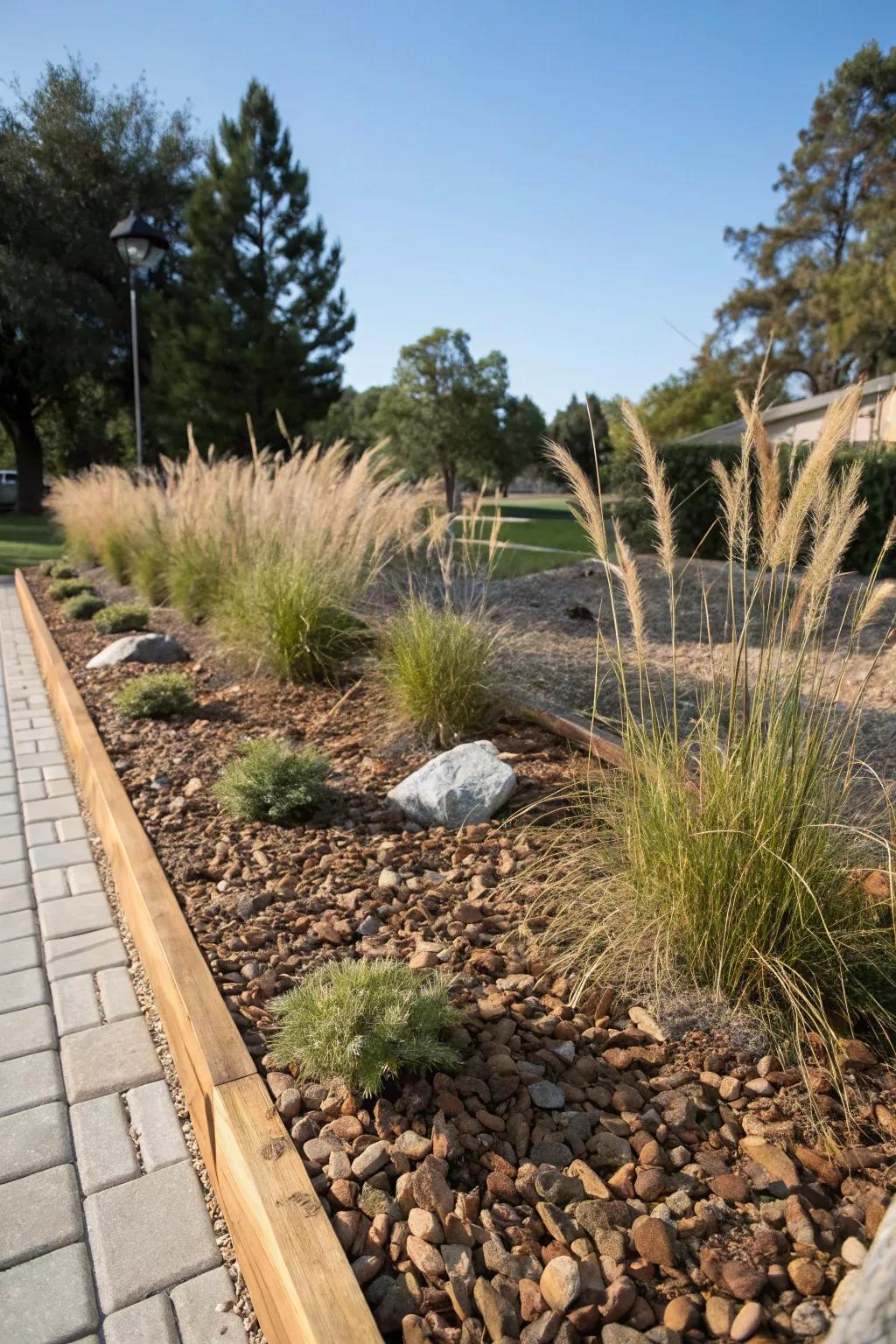
Pair wood chips with river rocks for a striking landscape feature. The contrast between the two materials is just stunning.
Maybe worth checking out:
- Decorative River Rocks for Landscaping: Elevate your garden design by incorporating natural river rocks for stunning contrast with wood chips.
- Wood Chip Mulch for Landscaping: Enhance soil moisture retention and aesthetics with premium wood chip mulch in your garden.
- Garden Edging Kit: Create clean boundaries between river rocks and grass with a durable garden edging kit.
